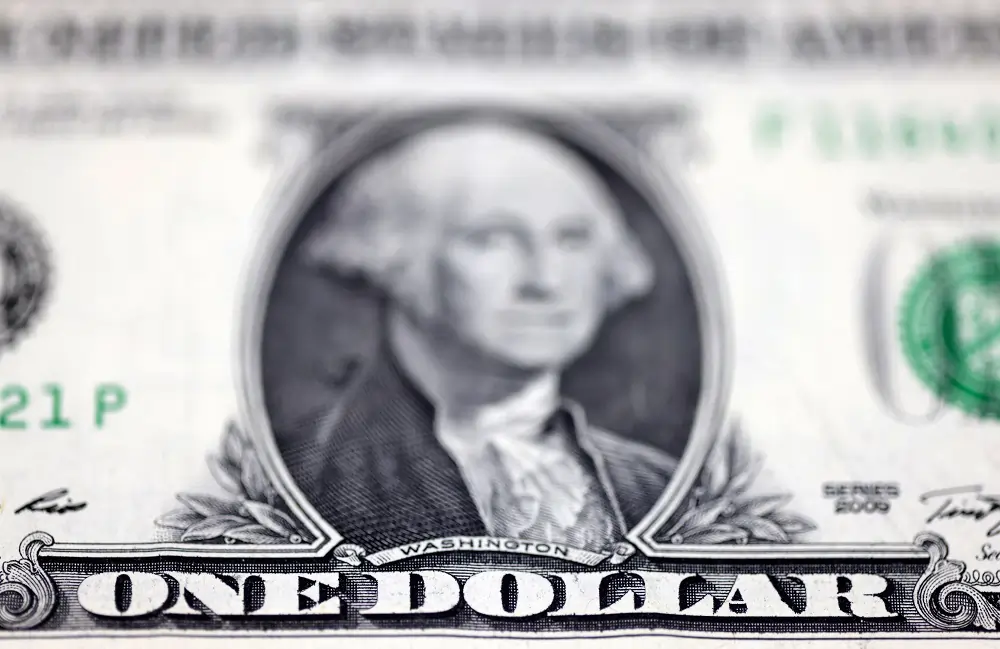
Dollar dips after soft US inflation data, Aussie, New Zealand dollars outperform
By Karen Brettell
NEW YORK (Reuters) – The dollar index gave up earlier gains and higher beta currencies, including the New Zealand and Australian dollars, outperformed on Friday after U.S. producer prices unexpectedly fell in December, raising expectations of an early U.S. rate cut.
The producer price index for final demand dipped 0.1% last month, after a decline in the cost of goods, while prices for services were unchanged, increasing the chances of lower inflation in the months ahead.
Fed funds futures imply an 81% chance of a March rate cut, up from 73% on Thursday, according to the CME Group’s FedWatch Tool.
“Even though you wouldn’t say overall that the macroeconomic picture is screaming at you that they need to cut that fast, the market seems to be excited about the prospect of cuts,” said Steve Englander, Head, Global G10 FX Research and North America Macro Strategy, Standard Chartered Bank NY Branch.
Traders maintained their view that March rate cuts are likely even after consumer price inflation data on Thursday came in above economists’ expectations. Last week’s jobs report for December also showed strong jobs growth, though underlying details of the report were mixed.
The New Zealand and Australian currencies were among the best performers after Friday’s data.
“If this is a trade, it’s going to be the higher beta currencies that respond the most and take comfort that the market’s clearly hot to trot on the Fed cutting. As long as that’s the perception in the market I think the higher yielders will do very well,” said Englander.
The kiwi was last up 0.55% on the day at $0.62660. The Aussie gained 0.47% to $0.67165.
The Norweigian krone also gained in line with oil prices after U.S. and British warplanes, ships and submarines launched dozens of air strikes across Yemen overnight. The U.S. dollar was last down 0.39% against at 10.27 krone.
The strikes came in retaliation for Iran-backed Houthi forces for attacks on Red Sea shipping, widening regional conflict stemming from Israel’s war in Gaza.
The euro, which is among the most exposed regions to higher energy costs, recovered earlier losses to last be little changed on the day at $1.09725.
The dollar index was little changed at 102.19.
The dollar fell 0.48% against the Japanese yen to 144.58.
Sterling edged higher, recovering earlier losses after data on Friday showed that Britain’s economy grew slightly more than expected in November but remains at risk of a mild recession.
In cryptocurrencies, bitcoin last stood at $45,305, down 1.84%, having surged to a two-year high of $49,051 on Thursday after the U.S. Securities and Exchange Commission on Wednesday gave the green light to offer ETFs linked to bitcoin.
(Reporting By Karen Brettell; Additional reporting by Harry Robertson in London; editing by Barbara Lewis)
By Karen Brettell
NEW YORK (Reuters) – The dollar index gave up earlier gains and higher beta currencies, including the New Zealand and Australian dollars, outperformed on Friday after U.S. producer prices unexpectedly fell in December, raising expectations of an early U.S. rate cut.
The producer price index for final demand dipped 0.1% last month, after a decline in the cost of goods, while prices for services were unchanged, increasing the chances of lower inflation in the months ahead.
Fed funds futures imply an 81% chance of a March rate cut, up from 73% on Thursday, according to the CME Group’s FedWatch Tool.
“Even though you wouldn’t say overall that the macroeconomic picture is screaming at you that they need to cut that fast, the market seems to be excited about the prospect of cuts,” said Steve Englander, Head, Global G10 FX Research and North America Macro Strategy, Standard Chartered Bank NY Branch.
Traders maintained their view that March rate cuts are likely even after consumer price inflation data on Thursday came in above economists’ expectations. Last week’s jobs report for December also showed strong jobs growth, though underlying details of the report were mixed.
The New Zealand and Australian currencies were among the best performers after Friday’s data.
“If this is a trade, it’s going to be the higher beta currencies that respond the most and take comfort that the market’s clearly hot to trot on the Fed cutting. As long as that’s the perception in the market I think the higher yielders will do very well,” said Englander.
The kiwi was last up 0.55% on the day at $0.62660. The Aussie gained 0.47% to $0.67165.
The Norweigian krone also gained in line with oil prices after U.S. and British warplanes, ships and submarines launched dozens of air strikes across Yemen overnight. The U.S. dollar was last down 0.39% against at 10.27 krone.
The strikes came in retaliation for Iran-backed Houthi forces for attacks on Red Sea shipping, widening regional conflict stemming from Israel’s war in Gaza.
The euro, which is among the most exposed regions to higher energy costs, recovered earlier losses to last be little changed on the day at $1.09725.
The dollar index was little changed at 102.19.
The dollar fell 0.48% against the Japanese yen to 144.58.
Sterling edged higher, recovering earlier losses after data on Friday showed that Britain’s economy grew slightly more than expected in November but remains at risk of a mild recession.
In cryptocurrencies, bitcoin last stood at $45,305, down 1.84%, having surged to a two-year high of $49,051 on Thursday after the U.S. Securities and Exchange Commission on Wednesday gave the green light to offer ETFs linked to bitcoin.
(Reporting By Karen Brettell; Additional reporting by Harry Robertson in London; editing by Barbara Lewis)


